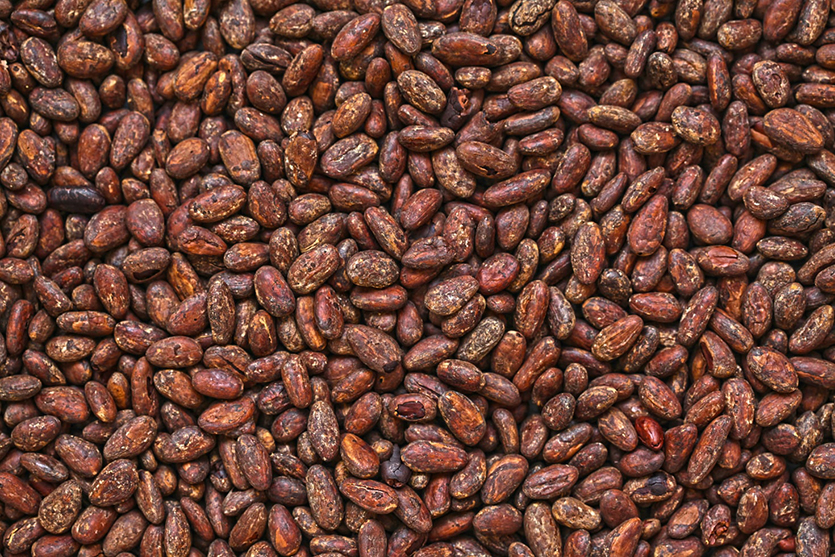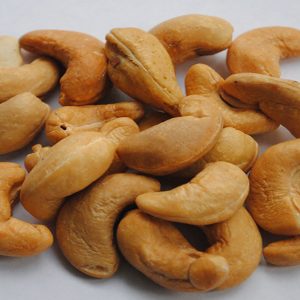Cocoa Beans
The cocoa bean, also cacao bean or simply cocoa or cacao, is the dried and fully fermented fatty seed of Theobroma cacao, from which cocoa solids and cocoa butter are extracted. They are the basis of chocolate, as well as many Mesoamerican foods such as mole sauce.
A cocoa pod (fruit) has a rough and leathery rind about 2 cm (0.79 in) to 3 cm (1.2 in) thick (this varies with the origin and variety of pod). It is filled with sweet, mucilaginous pulp with lemonade like taste enclosing 30 to 50 large seeds that are fairly soft and a pale lavender to dark brownish purple colour. Due to heat build-up in the fermentation process, cacao beans lose most of the purplish hue and become mostly brown in colour, with an adhered skin which includes the dried remains of the fruity pulp. This skin is released easily after roasting by winnowing. White seeds are found in some rare varieties, usually mixed with purples, and are considered of higher value.
Product Name: – Cocoa Beans
Botanical name: – Theobroma Cocao
HS Code 1801: (Whole or Broken, Raw or Roasted)
Quality Standards
Grade I:
(a) mouldy beans, maximum 3 per cent by count;
(b) slaty beans, maximum 3 per cent by count;
(c) insect-damaged, germinated, or flat beans, total maximum 3% .
Grade II:
(a) mouldy beans, maximum 4 per cent by count;
(b) slaty beans, maximum 8 per cent by count;
(c) insect-damaged, germinated, or flat beans, total maximum 6%
Moisture: – 7.5% max
Size: – Not more than 12% outside the range
Foreign Matter: – 2% max
Specifications
Cocoa beans quality parameter specification:
Main crop
Light crop
Parameters Grade I, Grade II, Grade I, Grade II
Total mould 3% max, 4% max, 3% max, 4% max
Slatey beans 3% max, 6% max, 3% max, 6% max
Other defect 3% max, 8% max, 3% max, 8% max
Wt of 300 beans >310g, >310g, <310 g, <310 g
Package
The cocoa bean is mainly packed with Jute bag. The jute bag must be clean and free of hydrocarbon.
Uses
Animal feed, soft drinks, alcohol, potash, jam & marmalade, organic mulch, cocoa butter, chocolate, cosmetics



Reviews
There are no reviews yet.